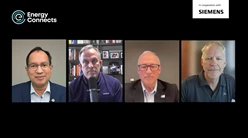Hydrogen Startup ZeroAvia Targets $150 Million Funding Round
(Bloomberg) -- Clean-aviation startup ZeroAvia is working to raise about $150 million in a new funding round as it progresses toward commercial introduction of its first hydrogen fuel-cell engine.
The company is in discussions with strategic and financial investors for the Series D funding, Chief Executive Officer Val Miftakhov said in an interview. He aims to identify a lead investor on the round, which has been under way for about six weeks, by the Paris Air Show in mid-June.
“This round will take us all the way to the end of ’28,” Miftakhov said. The company is likely to need further incremental funding, but once it starts shipping products “we can also go IPO.”
ZeroAvia announced a launch customer for its first engine, the ZA600, this week. UK cargo-services firm RVL Aviation plans to operate a Cessna Grand Caravan retrofitted with the hydrogen-electric powertrain on flights within the British Isles.
Certification is being coordinated through the US Federal Aviation Administration, which is taking the lead on the electric motor, and the UK’s Civil Aviation Authority, which is evaluating the hydrogen fuel cell system.
The company is on track to start commercial operations by late next year or early 2027, Miftakhov said. There are about 1,000 Cessna Caravans in service in the configuration that will receive the first approvals, an addressable market that could expand to about 3,000, he said. He added that the current funding round should be sufficient for the ZA600 program to reach positive cash flow.
The company has been working with aircraft manufacturers, operators and others in the industry to enter the engine-replacement market first before graduating to providing engines for new planes.
Miftakhov, who has reached tentative deals to supply American Airlines Group Inc., United Airlines Holdings Inc. and Alaska Air Group Inc. with engines for their regional turboprops, sees ZeroAvia becoming a disruptor in an aircraft-engine industry dominated by a handful of players, including Pratt & Whitney, Rolls-Royce Holdings Plc, General Electric Co. and Safran SA.
Its approach has been to start small — a Cessna aircraft that can be configured to seat up to 14 passengers — before moving into higher-capacity aircraft. Its next engine, the ZA2000, is aimed at turboprops seating up to 80 passengers.
Prior Rounds
ZeroAvia, which is based in the US but has about 200 of its 300 employees in the UK, has raised about $300 million, including prior equity rounds and grants.
The hydrogen-aviation sector has seen numerous setbacks in recent months — competitor Universal Hydrogen folded last year, and planemaker Airbus SE has pushed back its timeline for making a hydrogen-powered commercial airliner, dealing a major blow to efforts to build infrastructure like airport facilities and green-hydrogen fuel production.
In the meantime, the political outlook has become less friendly to clean tech in the US under President Donald Trump, and Europe is shifting money from green projects toward the defense sector.
Nevertheless, Miftakhov said ZeroAvia has benefited from having a less-cluttered field. The company was selected earlier this year a US Air Force grant to study integrating hydrogen propulsion into Cessna aircraft alongside autonomous technology.
“I don’t think there is a significant doubt that we are going to electrify aviation,” Miftakhov said. “It starts with small aircraft, but it goes larger and larger.”
(Updates with Air Force grant in penultimate paragraph.)
©2025 Bloomberg L.P.





